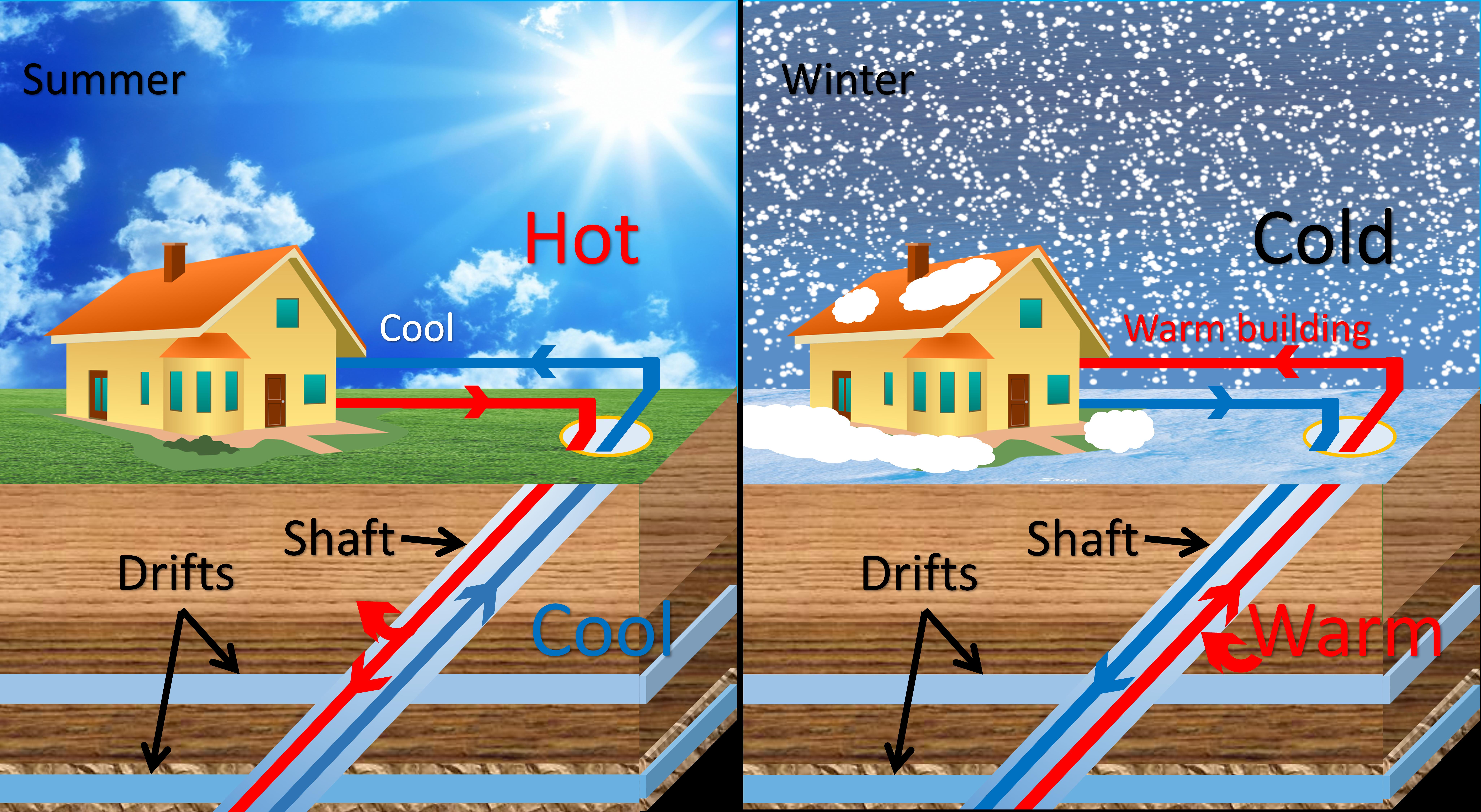Renewable Energy Lab (REL)
Hybrid Renewable Energy Farm
Energy does not live in a castle in the air. The geothermal, hydropower, and wind energies orginate from geological and meteorological process within and/or on the ground surface and facilites for all types of energy applications have a physical connection with the ground. We thus believe that ground is an essential part of the nexus of these energies and could even be the center. This leads to the introduction of knowledge of porous materials to the understanding of the integration of different energy techniques. A renewable energy lab, which includes wind, solar and geothermal energy, is under construction. This energy farm planned in a private 2-acre land will be a pilot study for assessing the possibility of using multiple renewable energy resources for the maximum effeciency expecially in cold regions.

Geothermal Energy from Mine Water
There are a great number of abandoned mine shafts in the US as well as other countries. Taking the Upper Peninsula (U.P.) in Michigan for example, abandoned copper mine shafts are widely distributed in the area and about nighty percent of them are filled with water. This effot is to explore the use of abandoned mine shafts for geothermal applications, which include a field study, a theoretical framework, and numerical simulations. The field study involved measurements of temperatures and chemicals in the mine water, which are of major concern in recovering geothermal energy from mine water. The theoretical framework provided a mathematical description for studying the scientific issue. It is the first time such a framework is established for holistically formulating the coupled physical processes in the mine water-surrounding porous material system. Simulations were conducted to test a critical part of the theoretical framework. The simulation results will provide interesting insights into the phenomena observed in the data measured in the field study. The abandoned mines in the U.P. will be the major facilities for this research. This is a collaborative effort with the Keweenaw Research Center and Dr. Pengfei Xue's Lab at the Great Lake Research Center at Michigan Tech.

